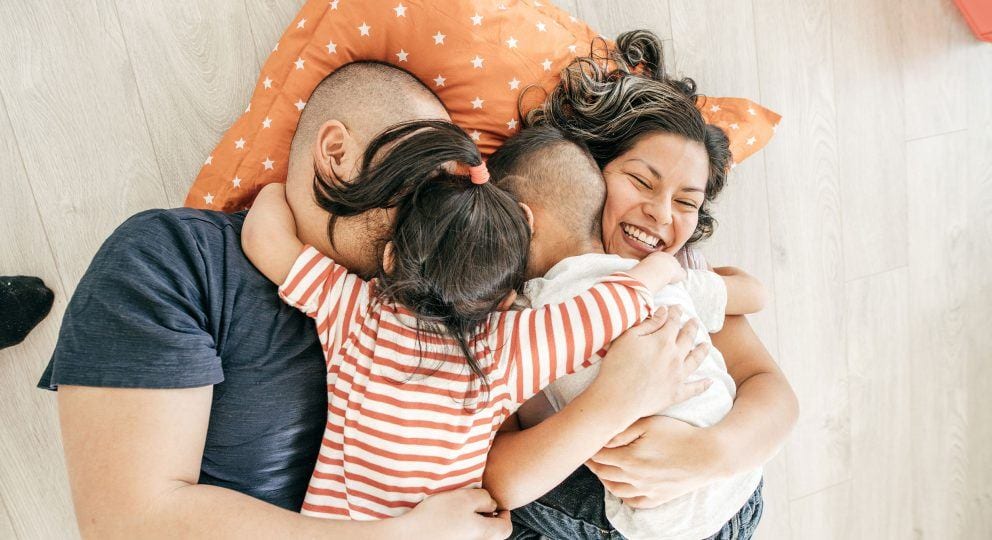Intimate Tickles Thought You Might Be Interested
Published: Fri, 26 Oct 2018 19:19:37 +0000
View Original Article

The talk. The birds and the bees. The awkward conversation with your parents you dreaded as a child. It probably went something like this: “Well, when two people love each other very much…” followed by a vague description of the physical act of sex, contraceptives, pregnancy, and STIs.
But were you ever taught about consent? What about affirmative consent? Did your parents and the adults in your life practice consent with each other, and with you? The #MeToo stories about non-consensual interactions, specifically ones that live in the grey area or ones that happen in childhood, are something we should all strive to eliminate from the next generation by educating our kids today.
It is approximated that 63,000 people under the age of 12 are victims of sexual abuse every year. One in six boys and one in four girls are sexually abused before the age of 18. And those are just the ones who report.
If we can teach our kids about consent and show them how to practice it through our actions, through those little teaching moments, then maybe, these stories can be less common.
Here are seven ways to teach your kids, and the kids in your lives, about consent.
Practice consent by example
Before children even learn to speak, they learn by observing and mimicking the world around them. It’s called observational learning. By practicing consent with our partners, friends, and other children, we can begin to model what consent should look like to those ever-watchful eyes.
This also extends to how we practice consent in our relationships with our children. By giving children choices in expressing consent in how they would like to be touched, we teach them how to express it when we’re not around. For example, If you want to kiss your child goodnight, ask them, “May I give you a kiss goodnight?” and respect their answer.
Give them bodily autonomy
Giving children choice is a gateway to giving them the tools to express their consent. You can ask your child “Do you want to wear your blue shoes or your yellow shoes today?” In the same way, it is important to give children options when it comes to their body. For example, if they have a rash and they need ointment you can say, “You need ointment for your rash, do you want to put it on, or can I help you?”
Giving children simple choices every day shows them that they have bodily autonomy so that they can carry that into other interactions. In the same way, it is important to not take that bodily autonomy away from your children. A common way children lose their bodily autonomy is through adults coercing them to hug and/or kiss relatives and friends. It’s important to show children that they have a choice. If they say no, you can give them alternatives, like “How about a fist bump?” but the key is to respect a “no” that may follow.
Teach them to listen to their bodies
Consent isn’t just a verbal interaction, so it’s important that we teach children to listen to their bodies. What feels good and what doesn’t feel good to them? Teaching them what it feels like to be present in their physical self, and what it feels like to have their physical needs honored and met, is key to them being able to appropriately express their needs later.
Teaching children about their physical pleasure is something that Sue Jaye Johnson, a journalist and filmmaker, talks about working through with her daughters. In an interview for the Future of Sex Podcast, she talks about how her daughter will ask her to rub her back and how she then asks “Well, how would you like me to rub your back?” giving her daughter the space to think about her pleasure and express her physical wants in a productive way. In the same way, we also need to teach our children to listen to their gut feelings and instincts. Our bodies are a powerful tool in telling us that something doesn’t feel right. By encouraging children to give credence to these feelings and voice them, we encourage an understanding of their own pleasure and needs and how they might express that to future partners.
Give them the tools to express their physical wants and needs
Once a child has language at their disposal, we can begin to help them express their wants and needs though their words. We can teach them polite ways to decline affection like “No, thank you. I don’t want to hug right now.” But we should also be teaching them that they can just say “no” and that that’s ok, too.
Rather than teaching our girls the narrative that if a boy teases you, he likes you, we should be teaching our kids that if they don’t like something and ask someone to stop, they need to stop. If their words aren’t heeded, that may be the appropriate time to involve an adult or remove themselves from interaction with the offending kid. In the same way, it is important to teach kids to ask permission, with words and gestures. They can offer a hand to hold or hold out their hands for a hug, but they also need to ask, use their words, and know that someone may say no.
Teach them how to handle physical rejection
While we need to teach our kids how to say no, we also need to teach our kids to recognize and accept the rejection of affection. It’s important to encourage them to stop when someone says no, and to step in as adults when we recognize our kids being affection aggressors, holding other kids a little too long or a little too hard.
We can teach kids to accept rejection and redirect them. We can tell them that just because a friend doesn’t want a hug, that that doesn’t mean they don’t love them and we can direct them to show affection in other ways. You can tell your child to use words of affirmation, acts of service, or gifts to express affection. While channeling affection is important, it’s also important to just teach that it’s ok that someone doesn’t want something, in the same way that they may not want things at times. They are in control of their bodies, just as someone else is in control of theirs.
Turn awkward moments into teaching opportunities
Something I’ve talked a lot about with peers is how their parents handled sex scenes in movies and television growing up. As a millennial, the general binary in my generation is parents who fast-forwarded through sex scenes and parents who made you endure the sex scenes in a tense silence. In addition to this binary, there are a lot of movies and shows from my childhood, and from generations prior, that display non-consensual interactions in a way that makes them seem okay.
What if we didn’t let that slide? What if we took media and created a dialogue, especially with older children and teens? If you’re watching a movie with your kid that has a sex scene, use the time that could be spent being awkward to talk about what’s being done right and what the characters should be doing regarding consent in the interaction.
Believe them and advocate for them
Finally, and most importantly, it is essential to believe children and advocate for them. If your child expresses discomfort or unease, ask them about their feelings and validate them. This is a crucial step of Emotion Coaching. When you believe them, it creates an open channel for communication between you. It teaches them them to trust you and trust their own instincts. So in turn, they might also believe the story of someone else.
Ask them if they want or need intervention. It’s then your responsibility to advocate for them with whomever is making them uncomfortable. That might mean talking to a parent, teacher, coach, or other adult. Sometimes we’re the ones that need to step in and have those tough conversations until our children are old enough to have them on their own.
Rather than having “the talk” with your kids, think of teaching consent as an ongoing dialogue—a million little conversations and day-to-day actions that can help them feel comfortable and safe in their own bodies, and respect the sanctity of someone else’s.
Subscribe below to receive our blog posts directly to your inbox.
